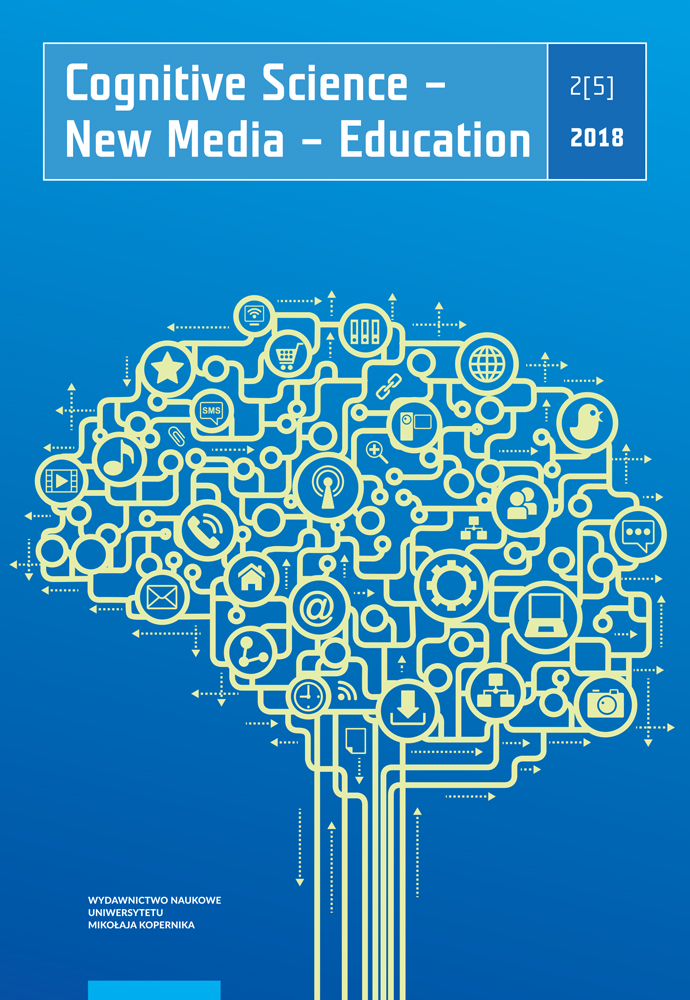Young Professional ESOL Learners Confront Competing Demands of Social Media and ESP
DOI:
https://doi.org/10.12775/CSNME.2018.011Keywords
social media, English for Specific Purposes (ESP), diverging language pathways, communications mechanisms, linguistic componentsAbstract
English language learners from non-English speaking nations are confronting an increasingly challenging environment as they try to develop language skills to meet the competing demands of contemporary social media on one hand and those of English for Specific Purposes (ESP) on the other. Social media’s explosion onto the global scene has created the need for non-English speakers to in effect learn two diverging contextual and communication patterns within what is supposed to be a common language.
English, at least a form of English, dominates social media communications on Twitter, Instagram, Facebook, and a whole host of abbreviated format international social media platforms. Moreover, these platforms have developed communications mechanisms that do not even conform to normally accepted, conversational patterns of spoken or written English. The English of some social media platforms is informal, littered with special and unique abbreviations, grammarless, decidedly unstructured and abruptly short. The vocabulary is explicitly simple in most cases, consisting mostly of one and two syllable words. The introduction of the “emoji” graphics (now totaling over 2600 according to Unicode Standard, the emoji lexicographer) has added image elements to the phonetic root language vocabulary. The near total lack of punctuation, further complicates the process of learning to communicate effectively to other than a select audience or specific groups of people.
ICT (Information and Communication Technology) tools are growing in use in education and in language teaching in particular, with Computer Assisted Language Learning (CALL) becoming widely used to facilitate vocabulary and structural grammar development among English Language Learners (ELLs) at all levels. It has been noted that blogs and other web-based tools have significantly enhanced writing and reading skills.
The young non-native English speaking professional is simultaneously confronted with the increasing need to acquire skills in one or more forms of ESP, be it academic, occupational or both, to be a competitive member of the global economy. Simultaneously, the informal elements of social media ignore these demands and focus on a casual and frequently unconstrained set of language behaviors.
The results of this study indicate that English for Speakers of Other languages (ESOL) students, particularly those developing ESP skills, are confronting what could logically be construed as two languages carrying the same name. This presentation and accompanying methodology explores the details and implications of this emerging phenomenon and is addressed by supporting materials, data and recommendations addressing the challenges of diverging language pathways between social media and English for specific purposes.References
Crystal D. (2006), Language and the Internet (2nd Edition), Cambridge: Cambridge University Press.
Danesi M. (2016), Language, Society, and New Media: Sociolinguistics Today, London: Routledge.
Dudley-Evans T. (1998), Developments in English for Specific Purposes: A multi-disciplinary approach, Cambridge: Cambridge University Press (Forthcoming).
Green J. (2010), How Bullets Saved My Life: Fun Ways to Teach Some Serious Writing Skills, Markham: Pembroke Publishers.
Hutchinson T. & Waters A. (1987), English for Specific Purposes: A learner-centered approach, Cambridge: Cambridge University Press.
Lamy MN. & Zourou K. (eds.) (2013), Social networking for language education, Baskingstroke: Palgrave Macmillan.
Meskill C. (2015), Online teaching and learning: Sociocultural dimensions. New York: Continuum Books.
Tanner D. & Trestor A.M. (eds.) (2013), Discourse 2.0: Language and new media, Washington: Georgetown University Press.
The British Sunday Times, (January 10, 2010).
Internet sources
Jabbari N. et al (2015), The benefits of using social media environments with English language learners. Proceedings of SITE2015, Las Vegas, NV, USA, March 1-6, 2015, pp. 2382-2836, Retrieved from https://www.researchgate.net/publication/285356520_The_Benefits_of_Using_Social_Media_Environments_with_English_Language_Learners, Sep 5, 2017.
Kleanhous A. & Cardoso W. (2016), Collaboration through blogging: the development of writing and speaking skills in ESP courses [in:] S. Papadima-Sophocleous, L. Bradley & S. Thouesny (Eds.) CALL communities and culture – short papers from EUROCALL 2016 (pp. 225-229) Research-publication.net. https://doi.org/10.14705/rpnet.2016.eurocall2016.556 Retrieved Sep1, 2016.
Lo SK (2008), The Nonverbal Communication Functions of Emoticons in Computer-Mediated Communication, “CyberPsychology & Behavior”, Volume: 11 Issue 5: September 25, 2008, p. 595-597, https://doi.org/10.1089/cpb.2007.0132 retrieved Sep 6, 2017.
Maltais M. (2012), YSK teens 2 fluent in TXT, “Los Angeles Times”, August 2, 2012 retrieved from https://www.latimes.com/business/la-xpm-2012-aug-02-la-fi-tn-texting-ruining-kids-grammar-skills-20120801-story.html, Sep 6, 2017.
Marvin LE. (1995), Spoof, Spam, Lurk, and Lag: the Aesthetics of Text-based Virtual Realities, “Journal of Computer-Mediated Communication”, Vol. 1, 2. http://dx.doi.org/10.1111/j.1083-6101.1995.tb00324.x retrieved Sep 7, 2017.
McWhorter J. (2013), Txting is killing language…JK!!!, TED2013 (Februay 2013) retrieved from https://www.ted.com/talks/john_mcwhorter_txting_is_killing_language,jk?language=en retrieved Sep 12, 2017.
Wang S. & Vásquez C. (2012), Web 2.0 and second language learning: What does the research tell us?, “CALICO Journal”, 29(3), p. 412-430. Retrieved from http://dx.doi. org/10.11139/cj.29.3.412-430 Sep 2, 2017.
Downloads
Published
How to Cite
Issue
Section
Stats
Number of views and downloads: 1024
Number of citations: 0



